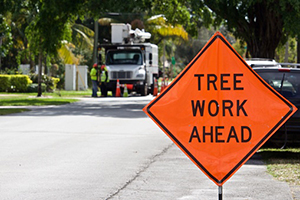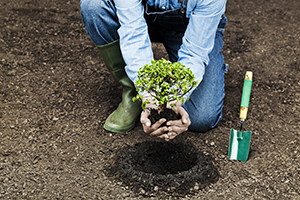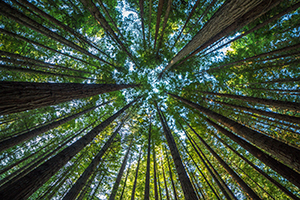
Trees and Your Service
Contact Form: Tree-Related Topics
We care about trees and your electric service
Most Central Hudson customers have their electricity delivered to their homes and workplaces through a system of interconnected overhead power lines. Nearly 8,000 miles of wire is used to serve all of our customers.
When electric service is interrupted during wind and lighting storms, or due to heavy rain, snow or ice, the problem can usually be traced to trees or tree limbs that fall, breaking lines or causing short circuits.
Tree damage: No. 1 cause of service interruptions
Storm-related damage to trees is the number one cause of power outages for Central Hudson customers. Interruptions are a nuisance to residents; a greater threat is posed when power is cut off to hospitals, fire and police stations, radio and television stations, newspapers, pumping stations, traffic lights and other essential public services. Some of our customers depend upon continuous, reliable supply of electrical power to operate life-support apparatus in their homes. In addition, trees that grow into contact with power lines can conduct electricity, which can create a hazard to people and property.
The best way to defend against these potential hazards is with a dedicated and thorough program of tree clearing and trimming, performed on a regular basis. Central Hudson’s program is carefully designed to reduce the incidents of power outages due to tree damage, while also protecting the natural and scenic beauty of the Hudson Valley. The program also complies with state and federal mandates that were enacted in the wake of the 2003 Northeast blackout, which requires all utilities to conduct an effective vegetation management program that meets standards and criteria in order to reduce power interruptions caused by trees. Central Hudson and other utilities are also required to meet specific reliability targets set by the state, and our vegetation management program is an important part in meeting these targets.
Studies to improve service reliability
As a result of these regulations, and in order to improve electric service for our customers, Central Hudson conducted a formal study of the causes of power outages and developed improvement measures. These include power line and substation upgrades, but records showed that falling trees and branches cause about 40 percent of all outages. A comprehensive study of Central Hudson’s program was conducted, including tree re-growth rates throughout the Mid-Hudson Valley region. The study found that the tree density along Central Hudson’s 7,240 miles of distribution lines is significantly higher than average nationwide, and that about 900,000 trees currently grow in proximity of these power lines.





